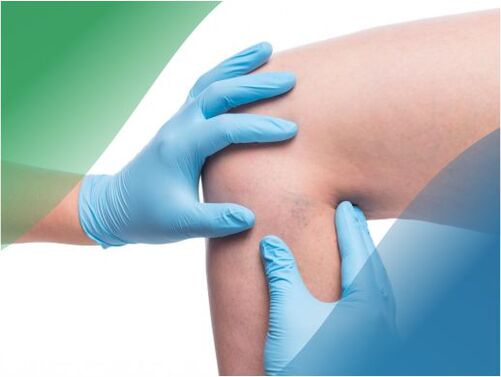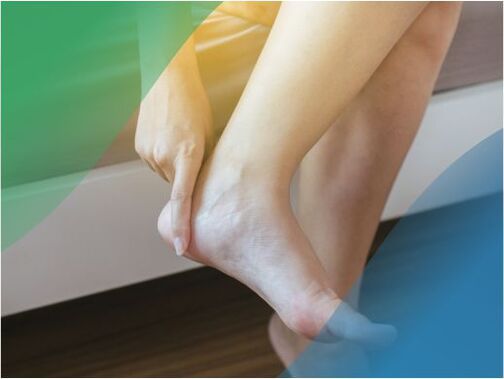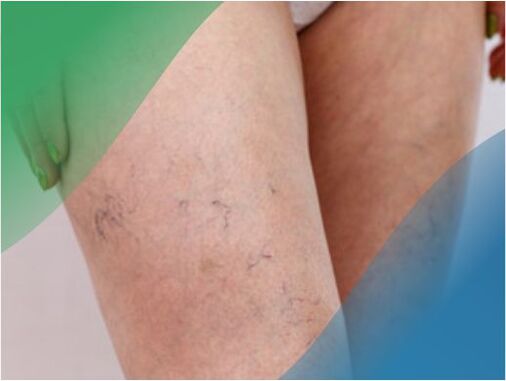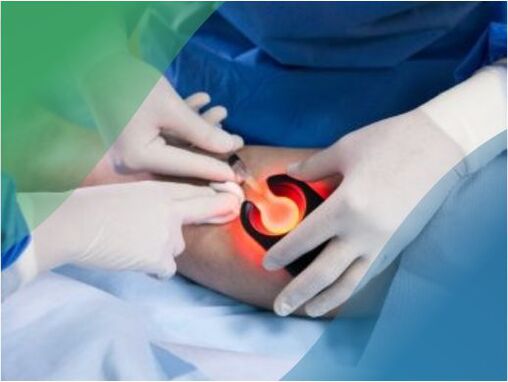
What comes to mind when we hear his wordvaricose veins"First of all, ugly feet are purple-blue, covered with numerous tubercles and a network of veins visible through the skin. Many of us consider varicose veins a purely cosmetic pathology that does not require special treatment. There is an opinion that it does not lead to results, it remains only an external defect. Unfortunately, this idea is not only wrong, but also dangerous.
To understand why varicose veins are dangerous, are there any ways to prevent them, why should they be treated if the disease has already developed, and most importantly, how to do it, we consulted a phlebologist. We talk about the mechanisms of onset of the disease, ways to prevent it, lifestyle features in the presence of this diagnosis and modern methods of correction.
What are varicose veins
,%20varicose%20veins%20(right).jpg)
Varicose veins are a disease known to mankind since ancient Egypt. Archaeological excavations confirm the presence of pathology among the contemporaries of the pharaohs and the builders of the famous pyramids. Known as the best doctors of antiquity, Hippocrates and Ibn Sina were looking for ways to successfully treat varicose veins. What happens to varicose veins? Why does the disease occur?
In the human body, blood normally travels from the bottom up through the arteries - from the tissues to the heart and lungs, and the contraction of our muscles helps. However, due to the gravitational force that affects all aspects of human existence, the fluid tends to fall logically. The special valves in our veins do not allow it to do so. They open in the direction of blood flow and close to keep it out. Thus, with the "sensitive guidance" of the valves present in the arteries, the blood is directed where it is needed.
But very often, for some reason, the valves malfunction, they do not close completely, and blood still flows down the arteries. The arteries cannot contain all the blood, they stretch and protrude from the skin with the tubercles. Often, the external thin veins in the legs are affected in this way, and "varicose veins" disease occurs.
Causes of the disease
There are several causes of varicose veins, all of which are well known in medicine.

- hereditary tendency.Heredity is one of the most common causes of the disease. Scientists have identified the so-called "varicose gene" responsible for its appearance. Therefore, if your relatives have any problems with blood vessels, they should be examined by a phlebologist as soon as possible. After all, the disease can manifest itself at any age, even at a very young age. Varicose veins are insidious because the visible symptoms appear later than the disease itself.
- Weakness of the vessel walls and valve apparatus.Many chronic diseases (pyelonephritis, rheumatism, hepatitis, liver cirrhosis, etc. ), hormonal changes and metabolic disorders, unhealthy lifestyle, physical inactivity, lower extremity damage, women taking hormonal contraceptives lead to this situation.
- Occupations related to staying in a static position for a long time(standing or sitting). Programmers, drivers, hairdressers, salespeople, joiners, carpenters and many others are at risk for varicose veins.
- Pregnancy. Even if the expectant mother does not have a hereditary cause of the disease, the risk of "gaining" varicose veins during pregnancy is significantly increased. Why does this happen? The synthesized "pregnancy hormones" affect the smooth muscles that relax the tone of the venous walls. The volume of circulating blood increases, thereby increasing the pressure on the walls of blood vessels and valvular apparatus. A woman's rapid weight gain during pregnancy puts unusually strong pressure on her legs and blood vessels, respectively.
- Excess weight.Deformation of the vessel wall with excess weight occurs due to a large load, increasing vascular pressure and pressure in the surrounding tissues. Being overweight raises blood pressure, makes it harder for blood to flow to the heart, and causes venous congestion.
- Gender and age.According to statistics, more than 70% of varicose veins occur in women of reproductive age. However, the disease is not uncommon in men, children and adolescents. Therefore, if any disturbing symptoms appear, it is necessary to consult a phlebologist, regardless of the sex and age of the patient.
Symptoms of the disease
As mentioned above, in the early stages, the disease is asymptomatic or disguised as normal fatigue: after a day of work, the legs tingle and swell, but everything disappears until the morning or after a long rest. Nocturnal convulsions, itching and burning in the lower extremities, they may also feel heavy. Such symptoms, as a rule, do not cause discomfort and are eliminated as overwork. The early stages of varicose veins do not reduce a person's physical activity and do not force him to change his lifestyle.
In the future, with the development of the disease, the symptoms become more pronounced: vascular network and tubercles appear in the lower extremities, swelling does not go away even after a long rest, severe pain occurs after a short walk, forcing a person. altering the normal rhythm of life, minimizing physical activity, leads to more severe blood stasis and, accordingly, aggravation of the disease.
Why are varicose veins dangerous?

In addition to the obvious negative consequences in the form of cosmetic defects and the inability to continue a normal lifestyle, varicose veins are dangerous for their complications.
- Venous bleeding.This is due to the fact that the normal connective tissue of the vessel walls gradually changes its properties, becoming brittle and inelastic. Even the slightest physical exertion (such as coughing or sneezing) can cause severe damage in the form of rupture and bleeding.
- Eczema and dermatitis.Impaired blood supply occurs due to prolonged oxygen starvation. Small bubbles, scales, crusts appear on the skin of the joint affected by varicose veins, accompanied by severe itching.
- Thrombophlebitis.It is a serious chronic disease characterized by inflammation of the vessels of the lower extremities, accompanied by the appearance of blood clots in their lumen. In most cases, thrombophlebitis is caused by varicose veins. The disease is accompanied by an increase in body temperature to 38-39 ° C, acute arch pain in the affected area, persistent edema and complete restriction of motor activity.
- Necrosis and trophic ulcers.Varicose veins are one of the most serious complications. Such a pathological process occurs against the background of thrombophlebitis, due to an inflamed varicose vein, the metabolism is disrupted and the tissues experience oxygen starvation for a long time. As a result, areas of dead cells appear on the surface of the skin, resulting in a large ulcer. Trophic ulcers are difficult to treat, so the average duration of treatment for such ulcers and necrosis is 3-4 months.
- Thrombosis.The most dangerous complication of varicose veins. This pathological condition is characterized by the formation of blood clots in the deep veins, which leads to disruption of blood flow. Deep vein thrombosis is primarily dangerous because blood clots can rupture during the most mundane tasks, which can lead to blockage and death of a pulmonary artery or other vital vessel. The presence of deep vein thrombosis means a lifelong restriction of the patient's motor activity.
It should be noted that all the serious consequences of varicose veins occur in the absence of treatment or as a result of improper treatment of the disease.
How to treat varicose veins?

The disease is difficult to treat, and in 80% of cases it returns even with careful and adequate therapy, because the deformed vessels will not be able to take their previous shape under any circumstances. But you need to treat varicose veins! Advanced stages of the disease can lead to serious consequences and even death. The combination of modern treatment and prevention of varicose veins can prevent the development of the disease and the appearance of serious complications. Modern medicine offers several ways to fight the disease.
- Compression therapy.Special compression is performed with the help of underwear. The basis of therapy is the creation of pressure in the lower extremities. As a result of such treatment, venous blood circulation improves, valve functions are restored, excess fluid is removed, venous pressure in the legs is reduced several times, the joints become more mobile, and blood flow speed increases. Compression therapy can be used as an independent treatment and in addition to other methods of combating varicose veins. Compression underwear is prescribed only by a doctor!
- Medical therapy.It is prescribed by a doctor to relieve the symptoms of the disease, reduce blood viscosity, improve the elasticity and recovery of blood vessels, increase metabolism and prevent the formation of blood clots.
- Sclerotherapy.This is an innovative and minimally invasive technique, the undoubted advantage of which is not only a very good cosmetic effect, but also a significant reduction in symptoms of the disease. To date, sclerotherapy is one of the most effective ways to combat varicose veins and related functional disorders. The procedure involves the introduction of special solutions into the damaged vein with a syringe with a thin needle. The injected drug sticks to the vessel and thus stops the blood circulation there. This is the main purpose of the manipulation - to remove the problem area from the general circulation.
- Surgical intervention.It is shown in stages where the disease significantly impairs the quality of life and threatens the development of dangerous complications. In most cases, surgery involves several different methods at the same time, the main purpose of which is to reduce the symptoms of the disease, improve the patient's quality of life and prevent the development of complications.
In modern medicine, there are quite effective methods to combat varicose veins. This is the main thing that doctors call: do not treat yourself! Consult a phlebologist (vascular surgeon) when the first unpleasant symptoms appear, such as heaviness and pain in the legs, night cramps, formation of a vascular network, and others. The doctor will conduct an examination and, if necessary, prescribe additional examination and treatment.













































